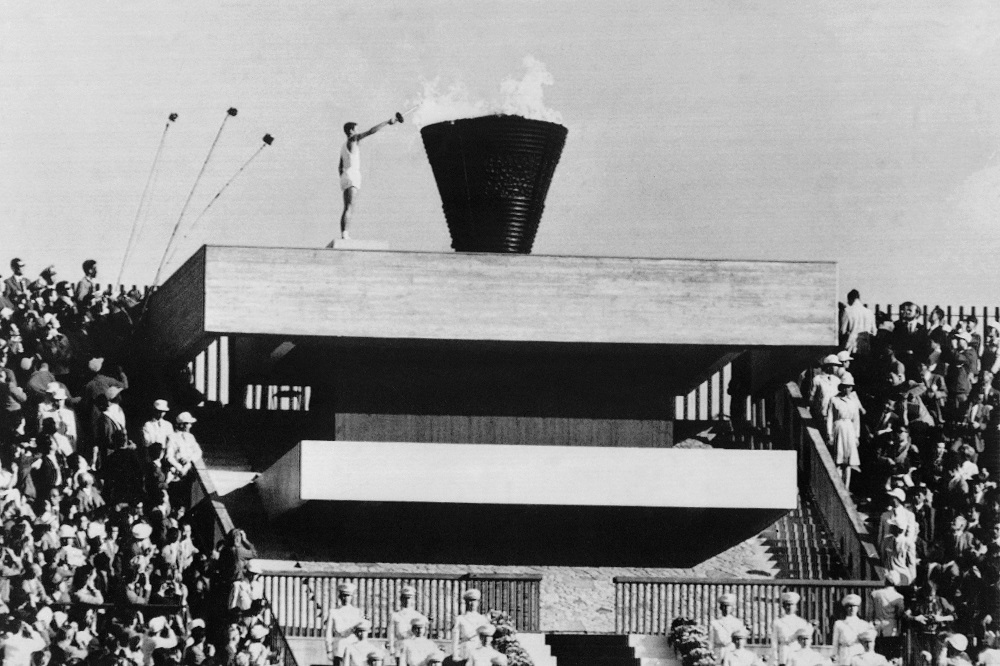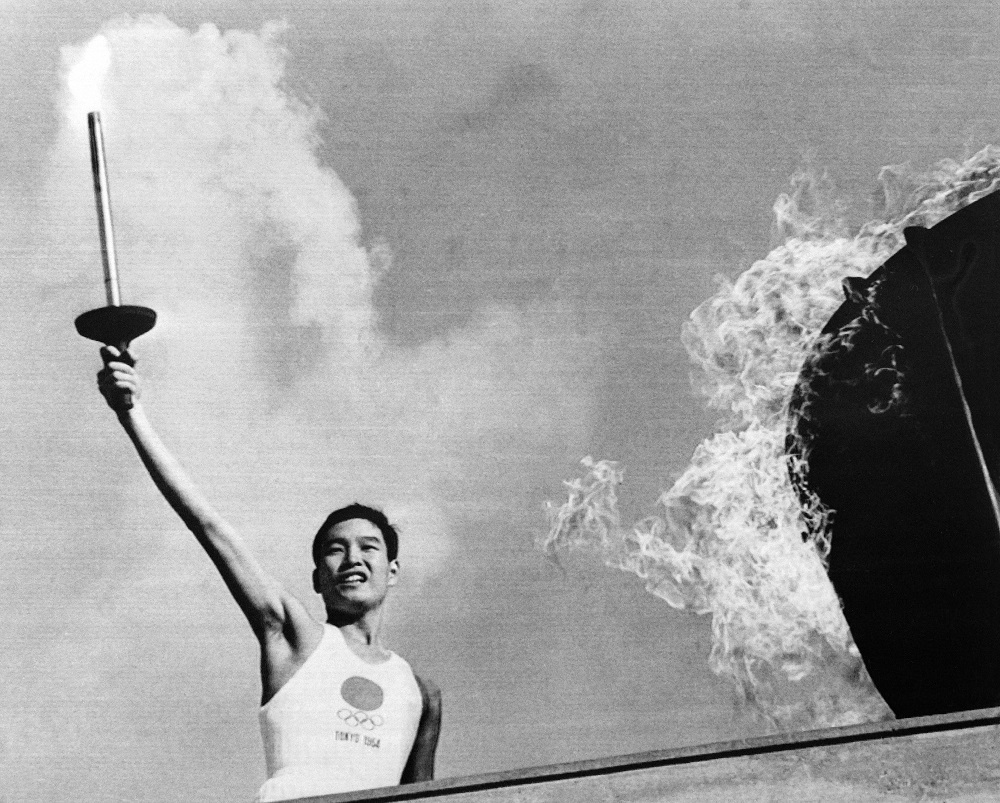



TOKYO: Yoshinori Sakai was born in Hiroshima on Aug. 6, 1945, the day the United States dropped an atomic bomb on the city.
Just over 19 years later, he ran with the Olympic flame into the national stadium, left the cinder track, and jogged up a long flight of flower-lined stairs to reach the top.
Wearing a white singlet with the rising sun emblem on his chest, he held the torch high in his right hand, faced the cauldron and lowered the flame to set off a ball of fire that signaled Tokyo’s 1964 Olympics were set to begin — and Japan was back from the ashes of World War II.
Sakai died almost six years ago and, though a world-class runner, he never competed in the Olympics. But he is forever immortalized in thousands of photos of him carrying the torch on the cover of the US magazine Sports Illustrated.
“Tokyo 1964: The Olympics Begin,” read the banner above Sakai’s photo.
Along with Rome in 1960, Tokyo was probably the first modern Olympics. It was the first to be shown internationally using communication satellites. It also featured the first Olympic wedding, when Bulgarian teammates Nikolai Prodanov and Diana Yorgova were married during the Games.
So many highlights. For Japan it might have been the women’s volleyball team — known as the “Witches of the Orient”— winning gold in an impassioned final against the Soviet Union.
American swimmer Don Schollander took four gold medals, Czechoslovakian gymnast Vera Caslavska won three, and Bob Hayes tied the 100-meter world record of 10.0 seconds, the last Olympics run on a cinder track. Abebe Bikila of Ethiopia became the first to win the marathon twice, and Soviet gymnast Larisa Latynina brought her career medal total to 18.
The biggest shock may have been Billy Mills. Born on the Pine Ridge Indian Reservation in South Dakota, Mills won the 10,000 meters, still the only American to ever win the race.
The Yoyogi National Stadium was the gem of the ’64 Games. Built by the late-architect Kenzo Tange, the masterpiece was the venue for swimming and is slated to be used for handball next year in Tokyo. The soaring roof line of Tange’s jewel still defines modern architecture. The stadium’s sweeping roof is anchored to earth by steel cables, like a suspension bridge, and mixes the modern with traditional forms found in Japanese temples and shrines.
It was built in a time before computer graphics or computer modeling. Tange used only a slide rule and his imagination. Many have described it as one of the most important buildings of the 20th century and the pinnacle of modern architecture.
SHINKANSEN
Nothing showed Japan’s recovery from the war better than the country’s famous Bullet Trains — Shinkansen in Japanese. They started running just a few days before the Olympics opened on a line from Tokyo to Osaka. The high-speed train — built to impress the world with Japanese technology — also showed the underbelly of the Olympics: excessive spending.
The Shinkansen project is widely reported to have cost twice what was forecast. The rush to build overhead highways and modernize the city also wrecked many views around Tokyo. One such highway was built over the Meji Era bridge at Nihonbashi. The overhead highway still stands as an eyesore from the ’64 building spree, and there is talk of replacing it.
“In fact, Tokyo 1964 remained the most expensive Olympic ever, when corrected for inflation, and on a per athlete basis, until Beijing 2008,” Olympic historian Dr. Bill Mallon said.
AP